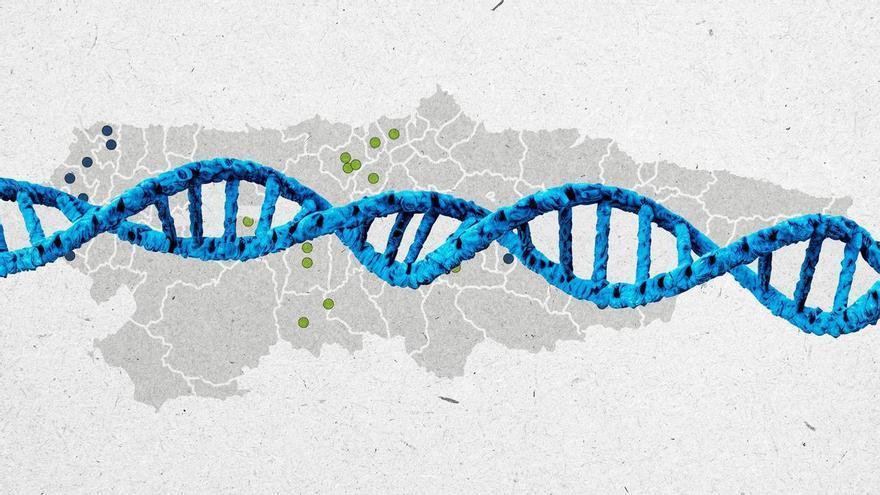CANCER MAP ASTURIAS | Genetic mutations predisposing to cancer discovered in Asturias (and coming from these tips)

HUCA is again at the forefront of research after the discovery of genetic mutations in the region dating back 400 years that predispose to breast cancer. The discovery could have important implications. “You can do early diagnosis on demand. Being able to tell a family whether the mutation they have is actually the cause of breast or ovarian cancer is very important for providing genetic counselling to the rest of the family.”
These are the words with which Dr. Pilar Blay, researcher in the Family Cancer Unit of the Medical Oncology Service of HUCA, sums up the most direct application of this groundbreaking discovery in Asturian health care, which she has carried out together with Dr. Milagros Balbín, head of the Molecular Oncology Laboratory of HUCA, head of the Molecular Oncology Group of the Principality’s Scientific Research Institute (ISPA) and researcher at IUOPA.
After collecting information about this type of disease for more than 15 years and carrying out medical work, analyzing more than 1600 families, this team of researchers from the Laboratory of Molecular Oncology of HUCA was able to draw up a “genetic map of familial breast cancer in Asturias”, deciphering “a specific mutation of the region, which occurred about 4 centuries ago, which predisposes to the development of this type of tumor”.
Seeing the same changes in a large number of hereditary cancer cases alerted the team, prompting them to look for the cause of these mutations, Balbin says. And the numbers were telling. Of the more than 1,600 families studied during that period, the study found that 238 carried hereditary pathogenic variants of the BRCA1 and BRCA2 genes.
“Some of these mutations have never been described in any other population in the world. They come from Asturias,” says Balbín, who finds the answer to this situation in the “geographical and population isolation that has always existed in the Principality.”
Thus, the doctor adds, when the variant appeared about 400 years ago, it was easily passed down from generation to generation until today. “Now we see many families that, although seemingly independent, actually have a common ancestor and origin,” he specifies. And, although all this may seem very distant, its relevance is very present in the daily lives of many people.
They find the cause of specific Asturian mutations in familial breast cancer.
“Inheritance is like a coin toss. It’s 50-50%,” emphasizes Dr. Pilar Blay. However, thanks to this work, certain measures can be taken to try to reduce this percentage, avoiding, as much as possible, the onset of the disease in the first place and even finding pharmacological solutions later.
“It is necessary to carry out these studies to be able to take preventive measures against cancer, such as risk-reducing surgeries or medical examinations, such as, for example, more intensive and frequent mammograms. But it is also important because knowing the changes in these genes has allowed and allows the development of specific drugs, for example, there are breast tumors for which drugs have recently been approved if you have any of these mutations,” emphasizes Dr. Milagros Balbín. Some mutations that “must be known as much as possible and identified from the beginning,” adds Pilar Blay.
“It is very important to clarify and find out whether this mutation is the cause of cancer or not. When genetic analysis is carried out, there can be three options: the mutation is hereditary, it is not, or it is unknown,” he explains, pointing out the complexity that this last option entails, since it can affect future generations.
“It’s important for the patient and the rest of her family to know if there’s a mutation that’s causing the disease,” says Bley, citing the example of actress Angelina Jolie, who had a double mastectomy and removal of her ovaries and fallopian tubes after learning she carried the BRCA1 and BRAC2 genetic mutations.
“We’ve uncovered some of these mutations that are not known to cause cancer or not, and these are what we call variants of uncertain clinical significance,” adds Bley, calling the advance “the most important finding” of the work, which was published in the prestigious scientific journal Clinical Genetics.
